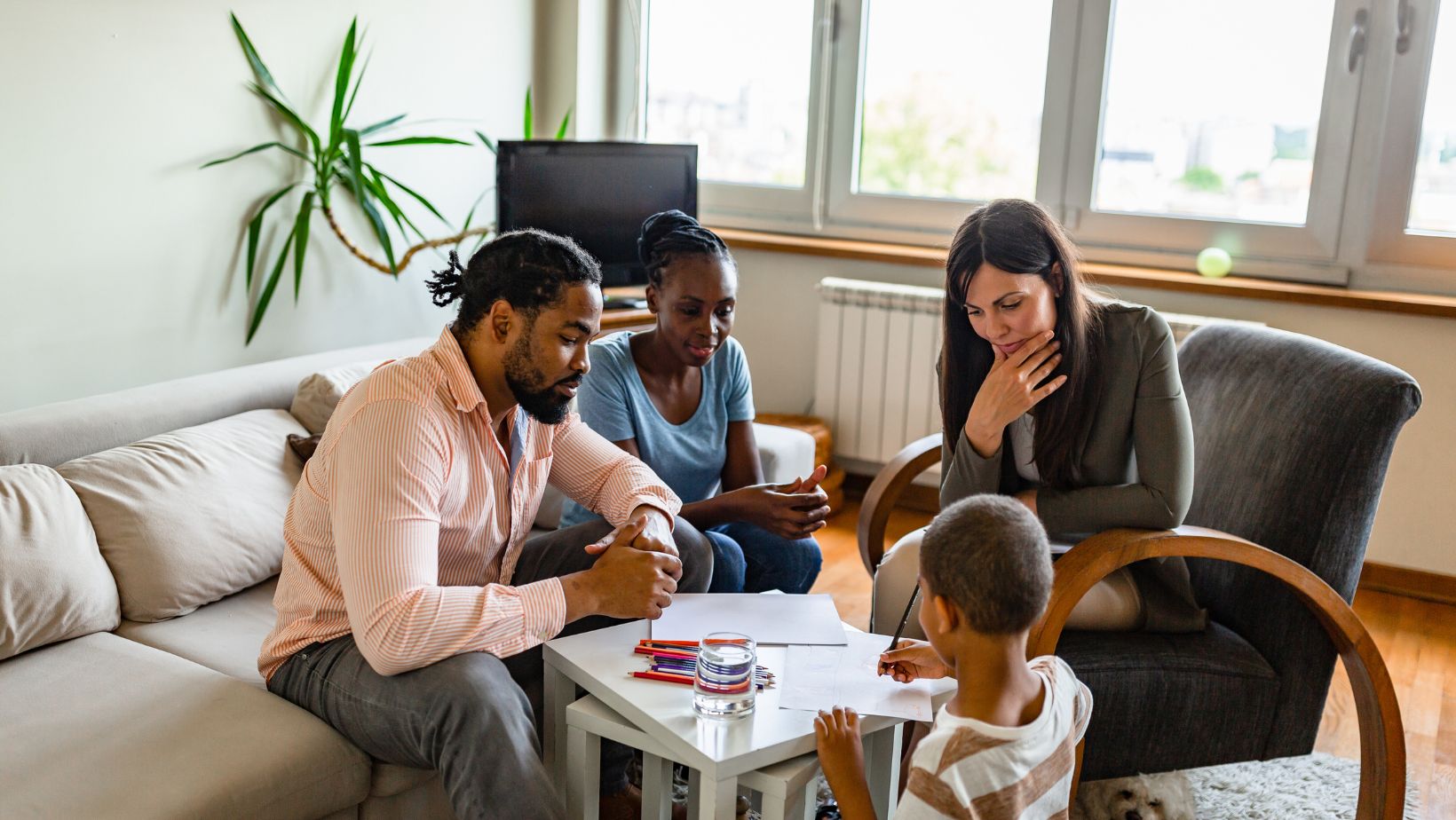In today’s fast-paced world, maintaining strong family bonds can be challenging. With everyone juggling work, school, and extracurricular activities, quality family time often takes a backseat. However, family therapy activities can play a crucial role in fostering connection, understanding, and harmony within a household.
This blog post will walk you through various engaging and effective family therapy activities. Read on.
Communication Games
Effective communication is the backbone of a healthy family relationship. Communication games can make learning this skill fun and engaging. One popular game is “The Talking Stick.”
It’s where only the person holding the stick can speak. This encourages everyone to listen actively and speak mindfully.
Another great activity is the “Feelings Circle.” Family members sit in a circle and take turns sharing their feelings about a specific topic. This helps everyone practice articulating their emotions and fosters empathy.
These games improve communication. It also provides a fun way for family members to connect. The skills learned during these activities can be applied in everyday interactions.
This makes them invaluable tools for strengthening family bonds. Make sure to consult an expert about these activities and how they can benefit families.
Especially on drug addiction. They can provide info such as alcohol abuse and the effects of prison on SUD.
Trust-Building Exercises
Trust is a foundational element in any relationship. Trust-building exercises can help family members feel more secure and supported.
One effective activity is the “Trust Fall,” where one person falls backward, trusting another to catch them. This exercise emphasizes mutual reliance and trust.
Another excellent exercise is the “Blindfold Walk.” One family member is blindfolded while another guides them through an obstacle course.
This activity requires clear communication and trust. This makes it a powerful bonding experience.
These exercises can be both fun and revealing. They highlight areas where trust might be lacking. It also provides opportunities to rebuild it in a safe, controlled environment.
Problem-Solving Challenges
Every family faces challenges, but how they handle them can make a big difference. Problem-solving challenges can teach families how to tackle issues collectively. One popular activity is the “Survival Scenario.”
Its where family members must decide together how to survive a hypothetical situation, like being stranded on a deserted island. Another engaging challenge is the “Puzzle Race.”
Each family member receives a part of a puzzle and must work together to complete it. This activity highlights the importance of collaboration and seeing tasks through to completion.
These challenges improve problem-solving skills. It also fosters a sense of teamwork and unity. They show that when families work together, they can overcome almost any obstacle.
Creative Expression Activities
Creative expression can be a therapeutic outlet for emotions and thoughts. Some activities can help family members express feelings they might not be able to verbalize. Examples like:
- drawing
- painting
- writing
One fun activity is “Family Portrait.” It’s where each member draws their version of the family. This can lead to insightful discussions about how each person views the family dynamic.

Another creative activity is “Storytelling.” Each family member contributes a sentence or paragraph to a story, creating a unique narrative together. This activity encourages:
- creativity
- collaboration
Creative expression activities provide a different way for family members to connect and understand each other. They offer a break from traditional talking-based activities. This makes therapy sessions more varied and engaging.
Active Listening Exercises
Active listening is a crucial skill for effective communication. Exercises that focus on this skill can help family members better understand and support each other. One effective activity is “Echo.”
Its where one person shares a thought or feeling, and another repeats it back in their own words. This ensures that the speaker feels heard and understood.
Another useful exercise is “Question and Answer.” One family member asks a question, and the other must answer. This is while focusing on what was asked, not just what they want to say.
This encourages thoughtful responses and attentive listening. Active listening exercises can transform how family members communicate. This makes interactions more meaningful and supportive.
These skills can be easily integrated into daily life. It enhances overall family dynamics.
Emotional Regulation Techniques
Managing emotions effectively is crucial for maintaining harmony in family relationships. Emotional regulation techniques can help family members cope with stress. It also prevents conflicts from escalating.
One effective technique is “Deep Breathing.” Practicing deep breathing together can help everyone stay calm and centered.
Another technique is “Mindfulness Meditation.” Spending a few minutes each day practicing mindfulness can improve:
- emotional awareness
- control
This can be especially helpful during stressful times when emotions run high.
Using these techniques into family life can create a more emotionally balanced environment. They provide tools for managing stress and maintaining peace. This benefits everyone involved.
Role-Playing Scenarios
Role-playing scenarios can provide valuable insights into family dynamics. Family members can explore new ways of handling conflicts and improving relationships. This is by acting out different situations.
One common scenario is “Conflict Resolution.” It’s where two members act out a recent argument and then switch roles to gain perspective.
Another useful scenario is “Empathy Training.” It’s where family members role-play each other’s daily routines. This can foster empathy and understanding.

It helps everyone appreciate the challenges others face. Role-playing scenarios offer a safe space for experimenting with new behaviors and strategies.
They can lead to breakthroughs in understanding and communication. This makes them a powerful tool in family therapy.
Goal-Setting Activities
Setting and achieving goals can give families a sense of purpose and direction. Goal-setting activities can help family members align their efforts. Also, support each other in reaching their objectives.
One effective activity is “The Family Vision Board.” It’s where everyone contributes images and words representing their goals and dreams.
Another useful activity is “Weekly Check-Ins.” Each week, family members share their progress toward personal and collective goals. This encourages:
- accountability
- mutual support
Goal-setting activities provide a roadmap for growth and improvement. They help families focus on positive outcomes.
Also, work together to achieve them. It strengthens their bonds in the process.
Try These Family Therapy Activities Today
In conclusion, family therapy activities can be a powerful tool in building stronger relationships within families. Families can learn to communicate effectively and healthily resolve conflicts. This is by engaging in the activities mentioned above.
So why wait? Take the first step towards a stronger family bond today!
If you want to read more articles, visit our blog.
Jessica has a flair for writing engaging blogs and articles. She enjoys reading and learning new things which enables her to write different topics and fields with ease. She also strives to break down complex concepts and make them easy for anybody to comprehend.





